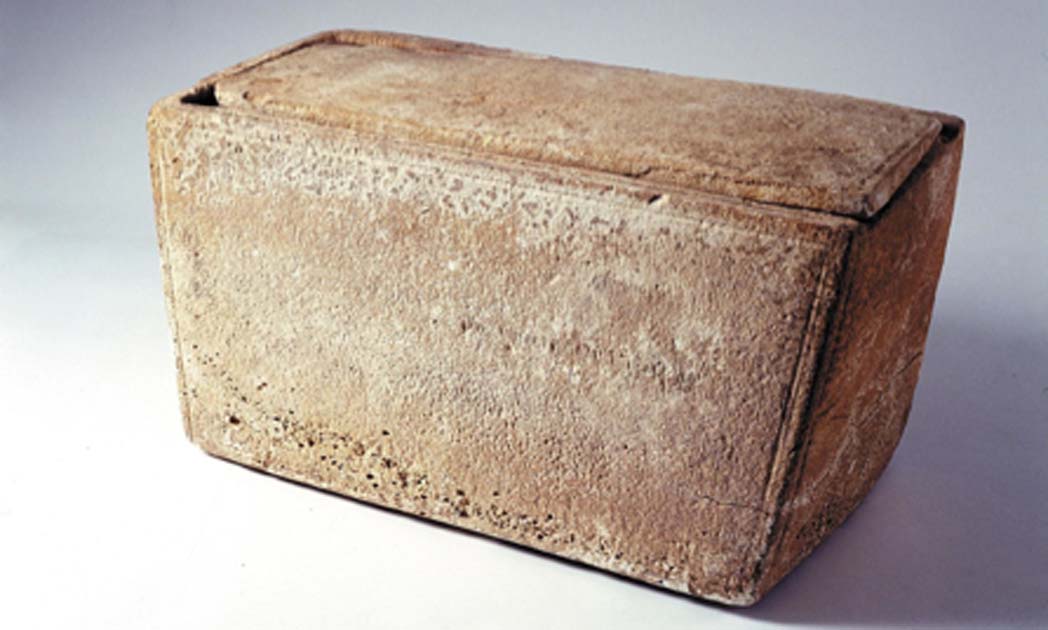This story is at www.ancient-origins.net/artifacts-other-artifacts/ossuary-james-0012181 … this sounds like a conspiracy theory but is never the less of interest as it is controversial. An ossuary of James the Just was brought to the attention of scholars back in 2002 by one Oden Golen (an Israeli dealer in antiquities who likes to describe himself as a collector of antiquities). He has, so we learn in an off hand manner, also been involved withe forgeries which raised suspicion. He sent the ossuary to Andre Lemair of the Sorbonne University in Paris for appraisal to the authenticity of an inscription on the object …
 … and was assured by Lemair it was genuine. Other scholars do not seem to agree, and for a variety of reasons we might suspect. The inscription was quite simple and read, 'James, son of Joseph, brother of Jesus'. According to philologists it is consistent with a first century AD date – but some doubt was cast on the final part of the inscription, '… brother of Jesus'. This means the ossuary is the first archaeological artifact that could be regarded as proof of the existence of Jesus (although there is ample textual proof) and is evidence that Jesus had siblings.
… and was assured by Lemair it was genuine. Other scholars do not seem to agree, and for a variety of reasons we might suspect. The inscription was quite simple and read, 'James, son of Joseph, brother of Jesus'. According to philologists it is consistent with a first century AD date – but some doubt was cast on the final part of the inscription, '… brother of Jesus'. This means the ossuary is the first archaeological artifact that could be regarded as proof of the existence of Jesus (although there is ample textual proof) and is evidence that Jesus had siblings.
As one might expect a big difference of opinion ensued as the inscription seemed to be just too good to be true. This is where the conspiracy creeps into the report. Apparently, Catholic dogma, we are told, is that Mary the mother of Jesus remained a virgin even after the birth of Jesus – although we don't know how strict they are in accepting this somewhat ambiguous idea. Hence, the author of the report, natually an Italian in a very Catholic country, is prone to point a finger at the Church in Rome as behind the scepticism, an easy target as they are hardly likely to cross swords with him. Hence, the conspiracy is that the Vatican was opposed to the find as genuine as it would contradict their teachings as far as Mary is concerned. Quite apart from the idea Mary, a married woman, remained a virgin for the rest of her life, there are many other people who would be keen to see the ossuary inscription as a forgery – but the author appears to ignore them. One may simplify this as atheists in general – and academia is full of them. Not only that but the modern generation simply do not believe in Christianity or in its tenets (such as a virgin mother). The Vatican may well have tried to resist but they are not in a position to dictate to academia (and the scepticism was by other scholars and historians). If the inscription is genuine this proves that Jesus was real and he had brothers and sisters and that would ujndermine atheisim to some degree – but not as damaging perhaps as it is to Catholic doctrine. What the author fails to take onboard is that doctrine can change and has changed on a number of occasions, especially in regard to the status of Mary. The author, Pierluigi Tombetti describes himself as an author and historian and seems to be writing a book on the ossuary and its implications. He also has a web site – www.pierluigitombetti.com … and it is worth while pointing out that Josephus in his Antiguities of the Jews says that James the Just was stoned to death in AD62 (condemned by the judges of the Sanhedrin).
